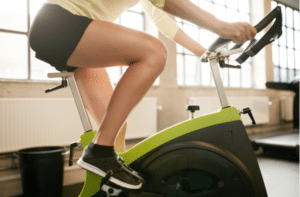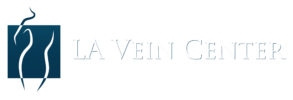
Do you have venous insufficiency?
If you say you have spider veins or varicose veins, then you know you have venous insufficiency. However, what if you don’t see any bulging or squiggly veins? Does this mean you don’t? Not necessarily. Some of the symptoms of varicose veins that can go unrecognized include:
- Restless legs syndrome that makes the legs twitch at night
- Leg twitching or itching or tingling when at rest
- Leg pain that is worse when standing and gets better with elevation
- Leg cramps and aching
- Discolored skin that cannot be explained and doesn’t go away
- A feeling of heaviness in the legs
Venous insufficiency will not go away without proper care. However, there is a lot you can do to manage your vein health and potentially avoid the need for medical intervention. Even if you have varicose veins treated by a vein specialist, the implementation of the following habits may reduce your risk of future varicose veins.
Exercise
With the beautiful weather that we have here in Southern California, it’s easy to get out and move the body on a regular basis. When we say that exercise is good for varicose veins, what we’re referring to is low-impact movement done on a regular basis. You don’t have to hit the gym for daily sweat sessions to manage venous insufficiency. What you do want to do is walk. If you can walk for half an hour every day, great. The general recommendation is to walk for at least 30 minutes, five days a week. That’s pretty easy for just about everyone! If you want to do even more to reduce your risks for future varicose veins, you can do certain floor exercises or other movements that work the calf muscles. Lunges are one example. Calf raises are another. If lunges are too difficult or you want an exercise that you can do at work or just about anywhere else, just stand up and sit down a few times. This movement causes the calf muscles to contract and pump blood upward with greater efficiency.
Watch Your Weight
This tip may sound so old and tiresome! It might feel like weight is a factor in just about any cosmetic or health concern you might face. As much as we know it can be difficult to hear over and over again that you need to manage your weight well, we have to admit that weight is, in fact, a factor in most health matters. When it comes to your veins, weight factors in by increasing the pressure that is exerted on the lower extremities. This excess pressure is inflicted on the muscles, the joints, and even the veins. It can cause veins to widen, resulting in valves not closing all the way. To manage weight, one of the leading recommendations is, you may have guessed it, exercise! Seeing as walking is already on your to-do list for vein health, this task is already looking more doable. Another change you might need to make to reduce weight and the pressure on your veins is to eat in more or at least find healthier menu options. The best foods for optimal health are fresh, whole, and don’t come out of a package.
Limit Salt Intake
Most people do not cop to eating too much salt. However, when asked about the items they consume on a regular basis, they are often surprised at the sodium that is hidden in their favorite foods. This is one of the benefits of avoiding packaged and processed foods, that you instantly decrease the amount of salt that is going into your body. Why would this matter to your vein function? Salt, sodium, causes water retention. Water retention causes an increase in blood volume and, with more blood trying to exit the lower extremities, there is more stress on the veins.
Venous insufficiency may cause ongoing discomfort and cosmetic concerns. With good habits and proper treatment, the condition can be managed well. To schedule a consultation at L.A. Vein Center to discuss your vein treatment options, contact us at (818) 325-0400.

